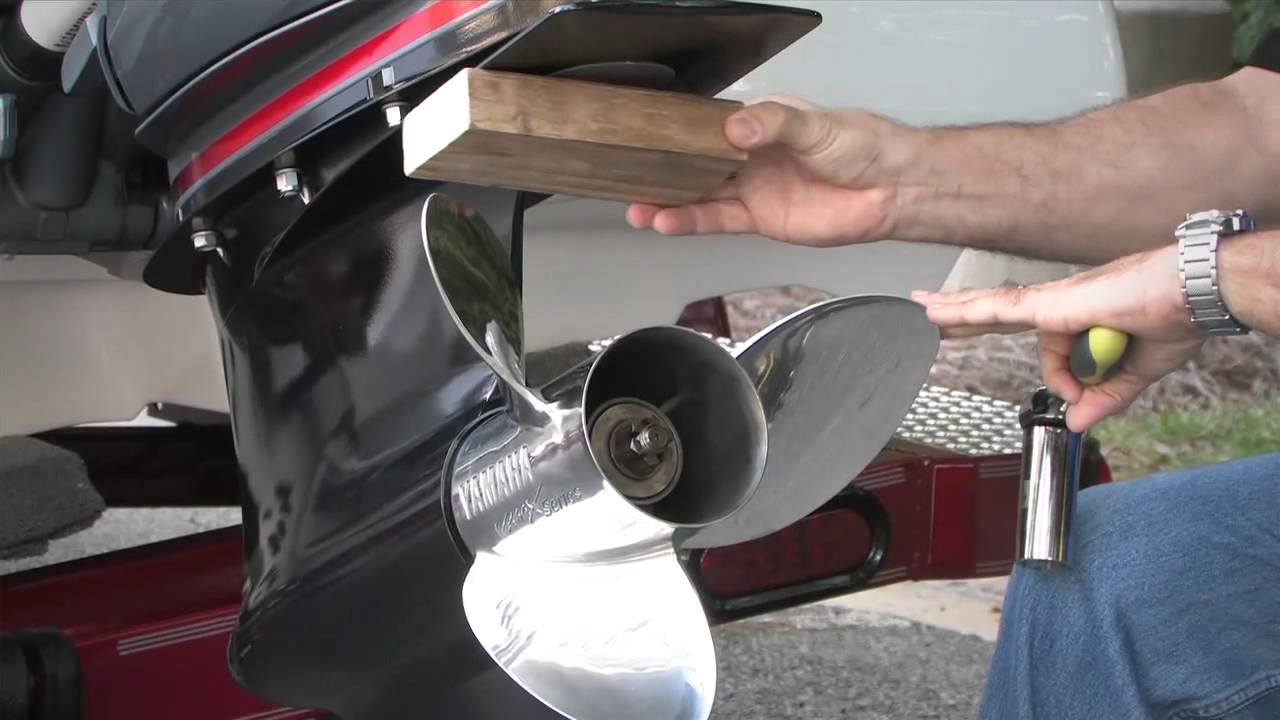Morgan from Michigan holding up his first mutton. PHOTO CREDIT: Capt. Teddy Pratt/Reel Deal.
One of the most abused pieces of equipment on any boat is the propeller, the Rodney Dangerfield of your boat. Though a critical element in the performance of your boat, the propeller gets more than its fair share of wear and tear. During the course of a season it gets nick-up, dented, dinged, and may develop tears, cracks, or just plain bent.
For the weekend recreational boater, looking at your prop is probably the last thing on your mind and if you did see something unusual, you’d probably take it to a boat service center. However for the serious fishermen who spends a lot of time on the water running thru weeds and trails, servicing your prop is probably one item that should be in your maintenance routine. For if you run on a slightly bent prop shaft after hitting a rock or if fishing lines wraps around the shaft and digs into your gear housing seal, you could be looking at significant dollars in engine repairs.
After every outing, as you tie down your boat to the trailer, you should inspect your prop. Inspect the blades and look for new dents or dings, spin the prop to see if it wobbles or is unusually loose, check the locking ring and cotter pin (if your engine has one), and look for signs of fishing line being wrapped around the prop-shaft. If you find a new nick or dink, if small enough you can probably file it out. However any major damage should be repaired at a professional prop shop to ensure the repaired prop is properly balanced and pitched. If you do have to send your prop into a shop, get an estimate for the repair cost. It could be less expensive to buy a new prop than repair a heavily damage one or having it repaired at an overly priced prop shop.
Since we live in a region with a year-long boating season, the thought of removing, inspecting and greasing your prop-shaft once a season is probably insufficient. A good rule of thumb would be to service your prop-shaft every 50 to 100 hours of service. It’s pretty straight forward to do and after a few times, you’ll find it’s a simple maintenance task.
Though engines vary, the steps are generally the same. Start by putting on a pair of work gloves for the edges of the blades can be very shape and they’ll give you a deep laceration. Remove the cotter pin or locking ring that secures the prop-shaft nut. Once removed, block your prop with a piece of wood against the cavitation plate to prevent the blades from spinning and then with a prop wrench break the nut free and remove the nut. Now you should be able to remove the propeller from the prop-shaft. As the propeller is being removed, pay particular attention to the alignment of the components such as the rubber hub, the spline coupler, the thrust washer any washers that are present. They’ll need to go back in the same order so you’ll need to focus on what you are doing. Once this is done you’ll be able to see that prop-shaft, inspect the splines for any wear and check the seal to the gear case to make sure no fishing line is working its way into the seal. If the seal gets corrupted, water will enter the gear housing which will damage the gears and the lower unit. If all is in good order, apply a nice layer of marine grade grease to the prop-shaft and reassemble the unit.
In addition to servicing your prop-shaft, keeping your propeller free of grim, rust, or scum build-up will keep your propeller looking good and in peak performance. Standard bathroom soap scum cleaner and a little elbow grease will remove most stains and residues built-up on you prop.
For the most part your propeller is a relatively low maintenance item on your boat but a damaged prop can have a significant impact on your boat’s performance. Remember this, without a propeller your $60,000 boat is nothing but a very nice raft.
[easy-social-share]







